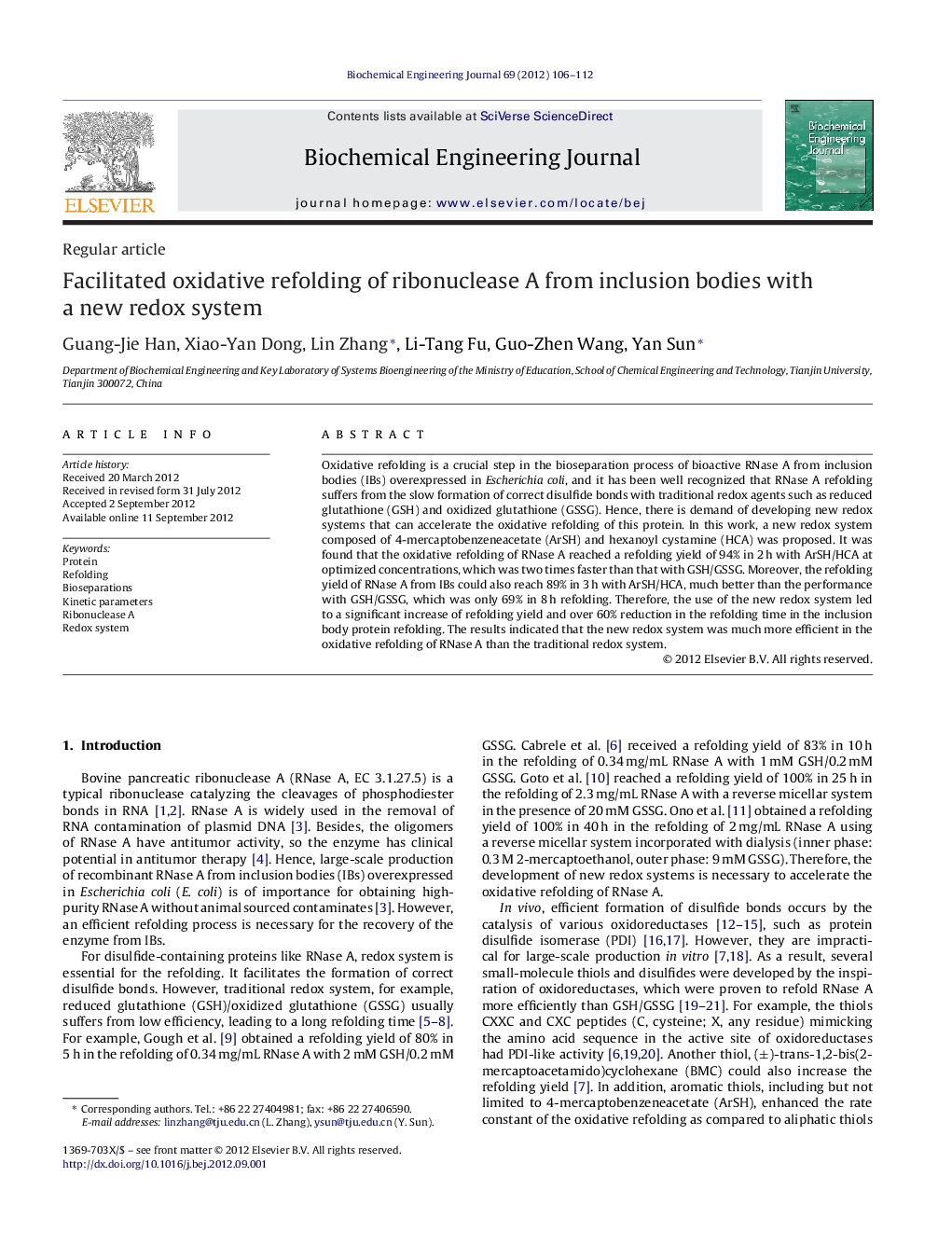| کد مقاله | کد نشریه | سال انتشار | مقاله انگلیسی | نسخه تمام متن |
|---|---|---|---|---|
| 3544 | 174 | 2012 | 7 صفحه PDF | دانلود رایگان |

Oxidative refolding is a crucial step in the bioseparation process of bioactive RNase A from inclusion bodies (IBs) overexpressed in Escherichia coli, and it has been well recognized that RNase A refolding suffers from the slow formation of correct disulfide bonds with traditional redox agents such as reduced glutathione (GSH) and oxidized glutathione (GSSG). Hence, there is demand of developing new redox systems that can accelerate the oxidative refolding of this protein. In this work, a new redox system composed of 4-mercaptobenzeneacetate (ArSH) and hexanoyl cystamine (HCA) was proposed. It was found that the oxidative refolding of RNase A reached a refolding yield of 94% in 2 h with ArSH/HCA at optimized concentrations, which was two times faster than that with GSH/GSSG. Moreover, the refolding yield of RNase A from IBs could also reach 89% in 3 h with ArSH/HCA, much better than the performance with GSH/GSSG, which was only 69% in 8 h refolding. Therefore, the use of the new redox system led to a significant increase of refolding yield and over 60% reduction in the refolding time in the inclusion body protein refolding. The results indicated that the new redox system was much more efficient in the oxidative refolding of RNase A than the traditional redox system.
► 4-Mercaptobenzeneacetate and hexanoyl cystamine was proposed as a new redox system.
► The system was more efficient than GSH/GSSG in accelerating protein refolding.
► The high efficiency was proven in the refolding of RNase A from inclusion bodies.
Journal: Biochemical Engineering Journal - Volume 69, 15 December 2012, Pages 106–112